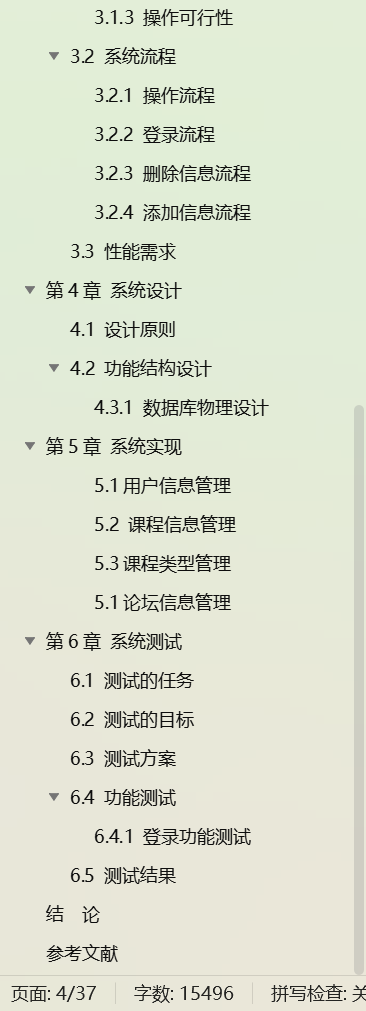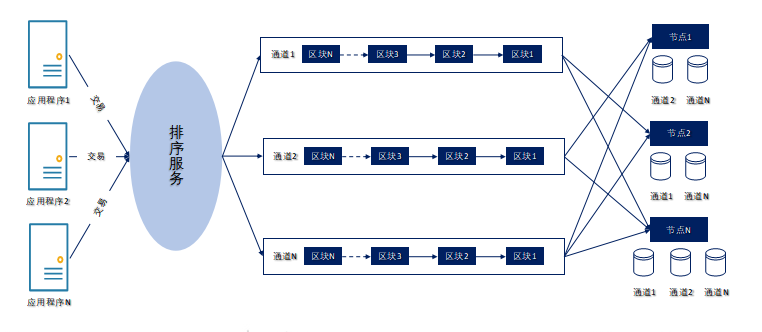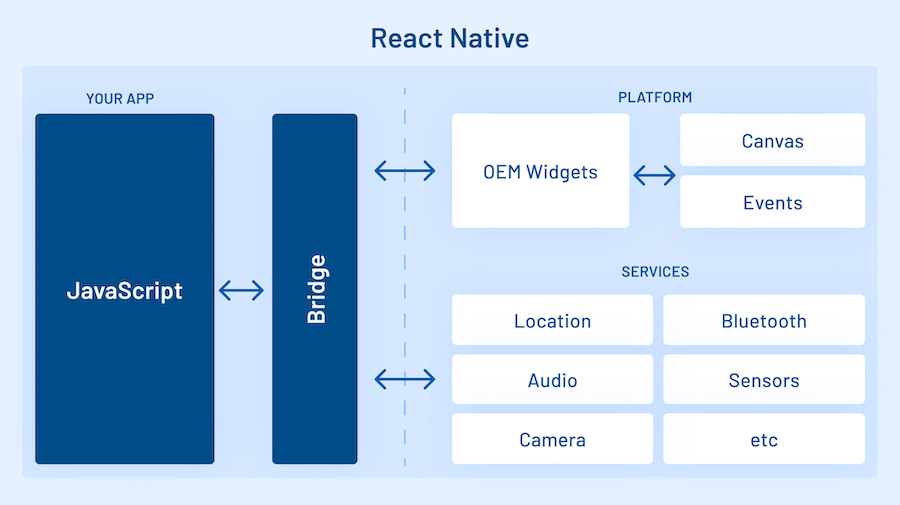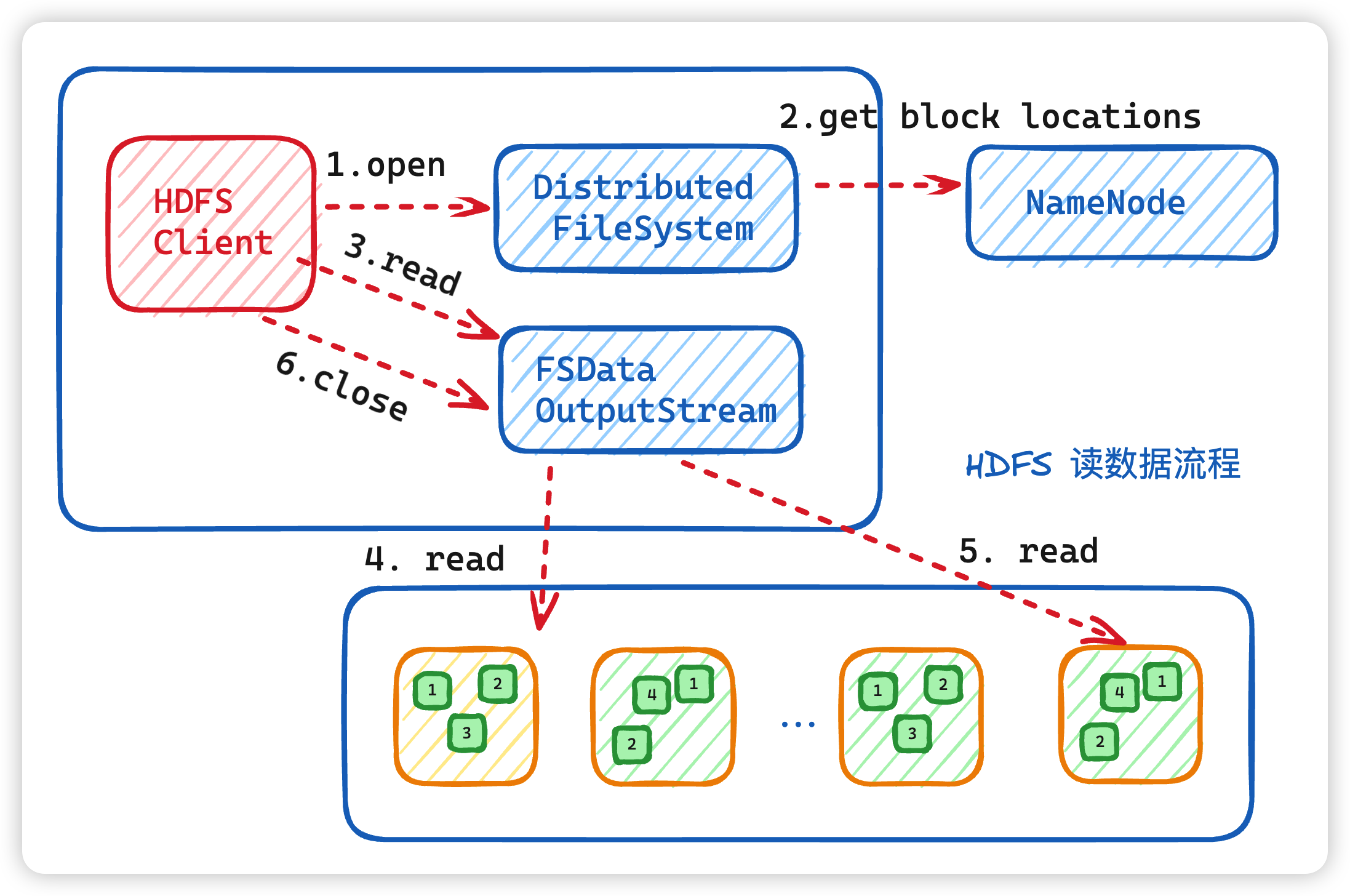主要内容:
源码编译安装、rsync同步操作、inotify实时同步、数据库服务基础
实操前骤:(所需tools.tar.gz与users.sql)
1.两台主机设置SELinnx和关闭防火墙
setenforce 0
systemctl stop firewalld.service //停止防火墙
systemctl disable firewalld.service2.真机远程复制tools.tar.gz到虚拟机1
[root@localhost 桌面]# scp /linux-soft/1/tools.tar.gz root@192.168.4.7:/root
root@192.168.4.7's password:
tools.tar.gz 100% 766KB 6.1MB/s 00:00 一、源码编译安装介绍
源码编译安装是指从软件的源代码开始,通过手动编译和安装过程来部署软件的一种方法。这种方法通常用于需要高度定制化或最新版本的软件,或者在特定操作系统或硬件平台上没有预编译二进制包的情况下。
1、源码包编译安装
1)源码编译安装的基本步骤如下:
获取源代码:通常通过下载软件的源代码压缩包(如.tar.gz或.zip文件)或从版本控制系统(如Git)中克隆代码库。
解压源代码:将下载的源代码压缩包解压到一个目录中。
配置编译选项:运行配置脚本(通常是
./configure),该脚本会检查系统环境,设置编译选项,并生成Makefile文件。配置脚本通常允许用户通过命令行参数指定安装路径、启用或禁用某些功能等。编译源代码:运行
make命令,该命令会根据Makefile文件中的指令编译源代码。编译过程可能包括编译源文件、链接库文件等步骤。安装软件:运行
make install命令,该命令会将编译好的二进制文件、库文件、配置文件等安装到系统中指定的目录(通常是/usr/local或用户指定的路径)。
2)源码包相较于RPM软件包的优劣势:
RPM包 定义:RPM软件包是一种预编译的二进制包,通常用于基于Red Hat的Linux发行版(如Fedora、CentOS、RHEL等)。包含了编译好的可执行文件、库文件、配置文件和安装脚本等。
优势:
- 易于安装和管理:RPM包可以通过简单的命令(如
rpm -i或yum install)进行安装,且支持依赖关系自动解决。- 版本控制:RPM包管理系统可以跟踪已安装的软件包及其版本,方便升级和卸载。
- 一致性:RPM包在特定发行版上编译,确保与系统库和工具的兼容性。
- 安全性:RPM包可以进行数字签名验证,确保来源的可靠性。
缺点:
- 定制性有限:由于是预编译的二进制包,用户无法轻易修改编译选项或功能。
- 版本更新滞后:RPM包通常由发行版维护者提供,可能不会立即提供最新版本的软件。
源码包 定义:包含软件的源代码,通常以压缩文件(如.tar.gz或.zip)的形式分发。用户需要手动编译源代码,生成可执行文件和库文件。
优势:
- 定制化:用户可以根据需要定制编译选项,选择启用或禁用某些功能。
- 最新版本:可以获取和安装软件的最新版本,而不必等待发行版的更新。
- 平台适应性:可以在没有预编译二进制包的平台上安装软件。
缺点:
- 复杂性:相比使用预编译的二进制包,源码编译安装过程更为复杂,需要用户具备一定的技术知识。
- 时间消耗:编译过程可能需要较长时间,特别是对于大型软件项目。
- 依赖管理:可能需要手动解决软件依赖关系,确保所有必要的库和工具都已安装。
总结
- RPM软件包 适合追求安装简便、系统一致性和安全性的用户,特别是在企业环境中。
- 源码包 适合需要高度定制化、追求最新版本或在没有预编译包的平台上安装软件的用户。
2、准备编译环境
开源软件多使用C/C++语言开发,需要 gcc、gcc-c++、make(默认安装)等编译工具
例如:
[root@svr7 ~]# yum -y install gcc make //安装软件包
[root@svr7 ~]# rpm -q gcc
gcc-4.8.5-28.el7.x86_64
[root@svr7 ~]# rpm -q make
make-3.82-23.el7.x86_64
[root@svr7 ~]# gcc --version
gcc (GCC) 4.8.5 20150623 (Red Hat 4.8.5-28)
Copyright © 2015 Free Software Foundation, Inc.
本程序是自由软件;请参看源代码的版权声明。本软件没有任何担保;
包括没有适销性和某一专用目的下的适用性担保。实操了解实现过程:

步骤1:安装开发工具gcc与make
步骤2:tar解包,释放源代码至指定目录
步骤3:./configure 配置,指定安装目录/功能模块等选项
步骤4:make 编译,生成可执行的二进制程序文件
步骤5:make install安装,将编译好的文件复制到安装目录
注意:./configure、make、make install的步骤必须要在释放源代码指定的目录以相对目录方式(当前目录)下进行脚本运行、编译二进制可执行程序、安装
步骤1:安装开gcc、make
[root@svr7 ~]# yum -y install gcc make步骤2:tar解包,释放源代码至指定目录(企业默认/usr/local目录为源代码存放目录)
[root@svr7 ~]# tar -xf /root/tools.tar.gz -C / //释放压缩包到根目录
[root@svr7 ~]# ls /
1.txt boot etc lib media mydvd proc run srv tmp usr
bin dev home lib64 mnt opt root sbin sys tools var
[root@svr7 ~]# ls /tools/
inotify-tools-3.13.tar.gz other
[root@svr7 ~]# tar -xf /tools/inotify-tools-3.13.tar.gz -C /usr/local/ //释放指定目录
[root@svr7 ~]# ls /usr/local/
bin games inotify-tools-3.13 lib64 sbin src
etc include lib libexec share
[root@svr7 ~]# ls /usr/local/inotify-tools-3.13/
aclocal.m4 config.h.in COPYING libinotifytools man src
AUTHORS config.sub depcomp ltmain.sh missing
ChangeLog configure INSTALL Makefile.am NEWS
config.guess configure.ac install-sh Makefile.in README步骤3:运行./configure 配置脚本,指定安装目录
- 作用1:检测当前系统是否安装gcc
- 作用2:指定安装位置与功能
[root@svr7 ~]# cd /usr/local/inotify-tools-3.13/ //必须以当前目录方式运行脚本
[root@svr7 inotify-tools-3.13]# ./configure --prefix=/opt/myrpm //指定安装目录
checking for a BSD-compatible install... /usr/bin/install -c
checking whether build environment is sane... yes
...补充:[--prefix=指定安装目录],此步骤不产生相应的目录(无需提前创建,make创建)
步骤4:进行make 编译,生成可执行的二进制程序文件(放在内存中)
[root@svr7 inotify-tools-3.13]# make
make all-recursive
make[1]: 进入目录“/usr/local/inotify-tools-3.13”
Making all in libinotifytools
make[2]: 进入目录“/usr/local/inotify-tools-3.13/libinotifytools”
...补充:make编译,将高级语言转化成低级语言
步骤5:make install 安装,将编译好的文件复制到安装目录
[root@svr7 inotify-tools-3.13]# make install
Making install in libinotifytools
make[1]: 进入目录“/usr/local/inotify-tools-3.13/libinotifytools”
make[2]: 进入目录“/usr/local/inotify-tools-3.13”
...
[root@svr7 inotify-tools-3.13]# ls /opt/
myrpm rh
[root@svr7 inotify-tools-3.13]# ls /opt/myrpm/
bin include lib share
[root@svr7 inotify-tools-3.13]# ls /opt/myrpm/bin/
inotifywait inotifywatch常见报错:未安装gcc开发工具
checking for gcc... no
checking for cc... no
checking for cl.exe... no
configure: error: no acceptable C compiler found in $PATH
See `config.log' for more details.二、分步源码编译解析及示例
1)下载及解包(inotify-tools软件工具)
- 使用tar解包,建议释放到/usr/src/目录(/usr/local)
- 标准位置:/usr/src/软件名-版本号/

[root@svr7 ~]# yum -y install gcc make
[root@svr7 ~]# tar -xf /root/tools.tar.gz -C /
[root@svr7 ~]# tar -xf /tools/inotify-tools-3.13.tar.gz -C /usr/local/2)配置(./configure)
- 执行源码目录下的configure脚本,通过“./configure --help”可以查看帮助
- 典型参数:--prefix=指定安装目录 //不生成目录(make进行生成)
- 作用:检测当前系统是否安装gcc、指定安装位置与功能
[root@svr7 ~]# cd /usr/local/inotify-tools-3.13/
[root@svr7 inotify-tools-3.13]# ./configure --prefix=/opt/myrpm3)编译及安装(make、make install)
- 命令:make //编译
- 命令:make install //安装
[root@svr7 inotify-tools-3.13]# make && make install4)结果验证
- 查看安装目录,了解程序的使用方法;
- 运行软件包提供的程序/服务
[root@svr7 inotify-tools-3.13]# ls /opt/myrpm/
bin include lib share三、Rsync基本使用
rsync 是一种快速、多功能的远程(和本地)文件复制工具。它可以在不同主机之间同步文件和目录,无论是通过本地网络还是通过互联网。rsync 以其高效的数据传输和增量传输特性而闻名,它只传输文件中发生变化的部分,而不是整个文件,从而大大减少了传输时间和带宽消耗。
官网:http://rsync.samba.org/
1、主要特性
- 增量传输:
rsync会检查文件的变化,只传输变化的部分,而不是整个文件。- 高效传输:通过使用压缩和校验和,
rsync可以减少传输的数据量。- 支持多种传输模式:可以通过 SSH、rsync 守护进程等方式进行传输。
- 保留文件属性:
rsync可以保留文件的权限、时间戳、软链接等属性。- 灵活的过滤规则:可以使用 include 和 exclude 规则来控制哪些文件和目录需要同步。
复制与同步的差异:
① 复制(cp):完全拷贝源到目标
② 同步(rsync):增量拷贝,只传输变化过的数据
2、Rsync基本用法
格式:rsync [选项...] 源目录 目标目录
例如,要在本地同步两个目录:
rsync -av /source/directory/ /destination/directory/
要在两台远程主机之间同步文件,可以使用 SSH:
rsync -avz /source/directory/ user@remotehost:/destination/directory/
常用选项:
-a:归档模式,表示递归传输并保持文件属性(相当于-rlptgoD)。-v:详细模式,显示传输过程中的详细信息。-z:压缩文件数据在传输过程中。-P:显示传输进度,并在传输中断后可以继续传输。--delete:删除目标目录中源目录没有的文件。- -n:测试同步过程,不做实际修改
注意:使用 [-av] 的前后顺序尽量不能颠倒,否则无法进行[Tab]补全命令;
本地目录同步(目录后+[ / ],只同步目录下的数据)
- 格式:rsync [选项...] 本地源目录 本地目标目录 //同步整个文件夹
- 格式:rsync [选项...] 本地源目录/ 本地目标目录 //只同步目录下的数据
补充:rsync同步会对源目录进行检验,第一次同步将源目标目录下的所有数据全部拷贝至目标目录;第二次同步将源目录的变化数据拷贝到目标目录
注意:不加选项 [--delete ,只会针对源目录的数据,即使目标目录有其它数据也不会操作;
例如:同步目录本身方式进行同步 [源目录]
[root@svr7 ~]# mkdir /mydir /todir
[root@svr7 ~]# cp /etc/passwd /mydir/
[root@svr7 ~]# touch /mydir/1.txt
[root@svr7 ~]# mkdir /mydir/ABC
[root@svr7 ~]# ls /mydir/ //准备测试需要的目录、文件
1.txt ABC passwd
[root@svr7 ~]# rsync -av /mydir /todir //不带[/],则同步目录本身
sending incremental file list
mydir/
mydir/1.txt
mydir/passwd
mydir/ABC/
sent 2,552 bytes received 66 bytes 5,236.00 bytes/sec
total size is 2,330 speedup is 0.89
[root@svr7 ~]# ls /todir/ //查看目标目录同步内容
mydir例如:同步目录内容方式进行同步 [源目录/]
[root@svr7 ~]# rsync -av /mydir/ /todir //带[/],则同步目录内容
sending incremental file list
./
1.txt
passwd
ABC/
sent 2,540 bytes received 65 bytes 5,210.00 bytes/sec
total size is 2,330 speedup is 0.89
[root@svr7 ~]# ls /todir/ //查看目标目录同步内容
1.txt ABC mydir passwd例如:增加文件,进行同步
[root@svr7 ~]# touch /mydir/2.txt //源目录创建新文件
[root@svr7 ~]# rsync -av /mydir/ /todir/
sending incremental file list
./
2.txt //只同步变化数据
sent 188 bytes received 39 bytes 454.00 bytes/sec
total size is 2,330 speedup is 10.26
[root@svr7 ~]# ls /todir/ //查看目标目录同步内容
1.txt 2.txt ABC mydir passwd例如:修改文件内容,进行同步
[root@svr7 ~]# echo 123 > /mydir/1.txt //源目录文件发生数据修改
[root@svr7 ~]# rsync -av /mydir/ /todir/
sending incremental file list
1.txt //只同步变化数据
sent 193 bytes received 36 bytes 458.00 bytes/sec
total size is 2,334 speedup is 10.19
[root@svr7 ~]# ls /todir/ //查看目标目录同步内容
1.txt 2.txt ABC mydir passwd例如:源目录与目标目录保持内容一致,进行同步 [--delete]
[root@svr7 ~]# ls /mydir/ //源目录内容
1.txt 2.txt ABC passwd
[root@svr7 ~]# ls /todir/ //目标目录内容
1.txt 2.txt ABC mydir passwd
[root@svr7 ~]# rsync -av --delete /mydir/ /todir/ //同步并删除目标目录多余的文档
sending incremental file list
deleting mydir/ABC/
deleting mydir/passwd
deleting mydir/1.txt
deleting mydir/
sent 142 bytes received 68 bytes 420.00 bytes/sec
total size is 2,334 speedup is 11.11
[root@svr7 ~]# ls /mydir/ //查看源目录同步内容
1.txt 2.txt ABC passwd
[root@svr7 ~]# ls /todir/ //查看目标目录同步内容
1.txt 2.txt ABC passwd例如:测试同步过程,不做实际修改 [-n]
[root@svr7 ~]# touch /mydir/c.txt
[root@svr7 ~]# rsync -n -av --delete /mydir/ /todir/
sending incremental file list
./
c.txt
sent 166 bytes received 23 bytes 378.00 bytes/sec
total size is 2,334 speedup is 12.35 (DRY RUN)
[root@svr7 ~]# ls /todir/ //查看目标目录同步内容
1.txt 2.txt ABC passwd四、Rsync+SSH远程同步(rsync负责同步,ssh负责远程)
用法及服务端要求
- 开启sshd服务并提供授权的用户、密码
列出SSH服务端资源
- 命令:rsync user@host:远程目录/
1、与远程的SSH目录保持同步
- 语法(下行):rsync [...] user@host:远程目录 本地目录
- 语法(上行):rsync [...] 本地目录 user@host:远程目录
注意:该方式远程同步,需要密码验证
例如1:远程同步(上行)
主机1:
[root@svr7 ~]# rsync -av --delete /mydir/ root@192.168.4.207:/opt
root@192.168.4.207's password:
sending incremental file list
deleting rh/
./
1.txt
2.txt
passwd
ABC/
sent 2,615 bytes received 87 bytes 163.76 bytes/sec
total size is 2,334 speedup is 0.86主机2:
[root@pc207 ~]# ls /opt/
1.txt 2.txt ABC passwd例如2:远程同步(上行),增加文件
主机1:
[root@svr7 ~]# touch /mydir/c.txt
[root@svr7 ~]# rsync -av --delete /mydir/ root@192.168.4.207:/opt
root@192.168.4.207's password:
sending incremental file list
./
c.txt
sent 211 bytes received 39 bytes 17.24 bytes/sec
total size is 2,334 speedup is 9.34主机2:
[root@pc207 ~]# ls /opt/
1.txt 2.txt ABC c.txt passwd例如3:远程同步(下载)
主机2:
[root@pc207 ~]# echo 123 > /mnt/abc.txt主机1:
[root@svr7 ~]# rsync -av --delete root@192.168.4.207:/mnt/ /opt/
root@192.168.4.207's password:
receiving incremental file list
deleting rh/
deleting myrpm/share/man/man1/inotifywatch.1
...
./
abc.txt
sent 46 bytes received 116 bytes 12.00 bytes/sec
total size is 4 speedup is 0.02
[root@svr7 ~]# ls /opt/
abc.txt
[root@svr7 ~]# cat /opt/abc.txt
123注意:进行远程同步下载时,若加 [-delete] 选项,会将/opt目录下的内容与/mnt目录内容保持一致,所以会对原来在/opt目录下的所有文件全部删除;
2、实现SSH无密码验证(公钥与私钥)
部署公钥与私钥,配对具有唯一性,且每次生成公私钥不一样;(RSA加密算法生成)
- ① 公钥public(锁),对应生成文件id_rsa.pub(公钥)
- ② 私钥private(钥匙),对应生成文件id_rsa(私钥)
- 生成公私钥命令:ssh-keygen
- 传递公钥命令:ssh-copy-id user@host //传递目标主机
- 公私钥存放目录:/root/.ssh/
- 目标主机存放公钥文件:/root/.ssh/authorized_keys //每一行记录代表一条公钥
补充:公钥和私钥由远程管理的主机生成,而被远程管理的主机负责接受公钥;
步骤1:生成公钥与私钥
[root@svr7 ~]# ssh-keygen //生成公钥与私钥(回车即可)
Generating public/private rsa key pair.
Enter file in which to save the key (/root/.ssh/id_rsa): 公私钥保存目录
Enter passphrase (empty for no passphrase): //公私钥的保险柜密码,不输入为空
Enter same passphrase again: //确认密码为空
Your identification has been saved in /root/.ssh/id_rsa.
Your public key has been saved in /root/.ssh/id_rsa.pub.
The key fingerprint is:
SHA256:fnqPfuarIHeeLqDRE6heKLIT+GSjd1cXwjZ8iWd/hkI root@svr7.tedu.cn
The key's randomart image is:
+---[RSA 2048]----+
| |
| |
| . o . . |
| . . B E |
|. o . oSB o . |
|= * o +.. o o o |
|.X o o.++.o. o |
|+ + o .o.*.oo |
| o . . .=B*+. |
+----[SHA256]-----+
[root@svr7 ~]# ls /root/.ssh/ //查看公私钥存放目录
id_rsa id_rsa.pub known_hosts解释:id_rsa(私钥)、id_rsa.pub(公钥)、known_hosts(记录曾经远程管理过的机器)
补充:在已生成公私钥的情况下,再次对同一主机进行生成,则将原有的公私钥对进行覆盖;
补充:本机可以把公钥对不同的目标主机进行提供,但私钥无法提供给目标主机;其次不同的目标主机都可以接收本机的公钥,当目标主机接受本机的公钥后,本机则可以进行SSH无密码访问目标主机;
步骤2:将公钥传递给主机2(相当于复制)
[root@svr7 ~]# ssh-copy-id root@192.168.4.207 //传递公钥给主机2
/usr/bin/ssh-copy-id: INFO: Source of key(s) to be installed: "/root/.ssh/id_rsa.pub"
/usr/bin/ssh-copy-id: INFO: attempting to log in with the new key(s), to filter out any that are already installed
/usr/bin/ssh-copy-id: INFO: 1 key(s) remain to be installed -- if you are prompted now it is to install the new keys
root@192.168.4.207's password:
Number of key(s) added: 1
Now try logging into the machine, with: "ssh 'root@192.168.4.207'"
and check to make sure that only the key(s) you wanted were added.步骤3:验证SSH无密码验证
主机2:
[root@pc207 ~]# ls /root/.ssh/ //查看目标主机的存放公钥文件
authorized_keys //传递后的公钥文件改名,内容一样主机1:
[root@svr7 ~]# ssh 192.168.4.207
Last login: Mon Mar 22 08:38:47 2021 from 192.168.4.254 //无需密码认证
[root@pc207 ~]# exit
[root@svr7 ~]# rsync -av --delete /mydir/ root@192.168.4.207:/opt //无需密码验证
sending incremental file list
sent 165 bytes received 13 bytes 15.48 bytes/sec
total size is 2,334 speedup is 13.11补充:生产环境下,如果发现/root/.ssh/目录下有authorized_keys文件,说明本机有无密码验证;(删除authorized_keys或dd某一行记录)
五、部署监控环境
同步的实时性:
① 按照固定周期定期同步
- 时间间隔不好固定,同步不及时或资源浪费;
- 实时性较差;
② Linux内核的inotify机制
- 提供事件响应式的文件系统通知机制;
- 安装inotify-tools控制工具可调用此机制实现监控;
1)安装inotify-tools工具
- 下载地址:http://download.sf.net/inotify-tools/
- 标准的源码、编译安装即可(/usr/local/inotify-tools-3.13/bin/目录下)
2)inotifywait监控基本用法(inotifywait报告)
格式:inotifywait [选项] 目标文件夹
常用命令选项:
- [-m] 持续监控(捕获一个事件后不退出)
- [-r] 递归监控、包括子目录及文件(捕获一个事件后退出)
- [-q] 减少屏幕输出信息
- [-e] 指定监视的modfiy、move、create、delete、attrib等事件类别(不加则所有事件都监控)
3)持续跟踪指定文件夹的变化
- 要求1:目标文件夹:/opt
- 要求2:当文档出现监视的事件时,会立即给出相应提示
例如:
[root@svr7 ~]# mkdir /opt/4.txt
[root@svr7 ~]# /opt/myrpm/bin/inotifywait -rq /opt/ //捕获一个事件则退出
/opt/ CREATE,ISDIR 4.txt例如:
[root@svr7 ~]# mkdir /opt/4.txt
[root@svr7 ~]# mkdir /opt/5.txt
[root@svr7 ~]# /opt/myrpm/bin/inotifywait -mrq /opt/
/opt/ CREATE,ISDIR 4.txt
/opt/ OPEN,ISDIR 4.txt
/opt/ CLOSE_NOWRITE,CLOSE,ISDIR 4.txt
/opt/ CREATE,ISDIR 5.txt
/opt/ OPEN,ISDIR 5.txt
/opt/ CLOSE_NOWRITE,CLOSE,ISDIR 5.txt六、配置实时同步
1)inotify与rsync的结合
基本思路:利用while循环来反复检查单次监控结果(书写shell脚本)
脚本:可以运行一个文件,实现某种功能;例如:useradd zhangsan
死循环:使用while循环(条件成立则重复执行)
格式:
while 条件
do
重复执行的操作
Done
注释:只要条件成立,则执行do和done之间的“重复执行的操作”
2)编写同步脚本
[root@svr7 ~]# vim /etc/rsync.sh //编写脚本
while /opt/myrpm/bin/inotifywait -rqq /mydir
do
rsync -a --delete /mydir/ root@192.168.4.207:/opt
done
[root@svr7 ~]# ls -l /etc/rsync.sh
-rw-r--r--. 1 root root 105 3月 22 16:01 /etc/rsync.sh
[root@svr7 ~]# chmod a+x /etc/rsync.sh //赋予执行权限
[root@svr7 ~]# ls -l /etc/rsync.sh
-rwxr-xr-x. 1 root root 105 3月 22 16:01 /etc/rsync.sh
[root@svr7 ~]# /etc/rsync.sh & //运行脚本程序并放入后台
[1] 2943
[root@svr7 ~]# jobs -l
[1]+ 2943 运行中 /etc/rsync.sh &
[root@svr7 ~]# kill 2943 //停止脚本3)验证实时同步效果
七、数据库服务基础(数据库管理系统)
- DB数据库:一批数据的集合,主流的数据库多用来存放关系型表格数据;
(关系型数据:以二维表格记录大量实体的属性信息)
- DBMS数据库管理系统:用来操作和管理;

Mariadb的基本使用:
1.Linux系统的管理指令不能使用
2.所有的数据库系统指令都必须以[ ; ]结尾
3.数据库系统的指令大部分不支持tab补全
1、部署Maridb数据库服务器
RHEL7中的MariDB软件包:
- 提供服务端有关的系统程序:mariadb-server
- 提供客户端及管理工具:mariadb
例如:
[root@svr7 ~]# yum -y install mariadb-server mariadb //安装软件包
[root@svr7 ~]# systemctl restart mariadb //重启服务
[root@svr7 ~]# netstat -anptu | grep :3306
tcp 0 0 0.0.0.0:3306 0.0.0.0:* LISTEN 5955/mysqld 2、访问Mariadb数据库
使用mysql命令,登录交互界面,实现数据库管理操作;
格式:mysql [-u用户名] [-p[密码]]

例如:
[root@svr7 ~]# mysql -uroot //进入数据库系统(默认免密码)
MariaDB [(none)]>
MariaDB [(none)]> show databases; //列出数据库
+--------------------+
| Database |
+--------------------+
| information_schema |
| mysql |
| performance_schema |
| test |
+--------------------+
4 rows in set (0.00 sec)
MariaDB [(none)]> quit
Bye3、数据库的增删查
MariaDB [(none)]> 交互命令:
- [ show databases; ] 列出数据库
- [ create database 数据库名; ] 创建数据库
- [ drop database 数据库名; ] 删除数据库
- [ use 数据库名; ] 使用/选择数据库
- [ show tables; ] 列出库里有哪些表
- exit 和 quit 都能退出
例如:创建数据库,数据库名为nsd01
[root@svr7 ~]# mysql -uroot
MariaDB [(none)]> create database nsd01; //创建数据库
Query OK, 1 row affected (0.00 sec)
MariaDB [(none)]> show databases; //列出数据库
+--------------------+
| Database |
+--------------------+
| information_schema |
| mysql |
| nsd01 |
| performance_schema |
| test |
+--------------------+
5 rows in set (0.00 sec)
MariaDB [(none)]> drop database nsd01; //删除数据库
Query OK, 0 rows affected (0.00 sec)例如:切换到mysql数据库并查看数据库表格
[root@svr7 ~]# mysql
MariaDB [(none)]> use mysql; //切换到mysql数据库
Reading table information for completion of table and column names
You can turn off this feature to get a quicker startup with -A
Database changed
MariaDB [mysql]> show tables; //查看当前库中所有表格
+---------------------------+
| Tables_in_mysql |
+---------------------------+
| columns_priv |
| db |
| event |
| func |
| general_log |
| help_category |
| help_keyword |
| help_relation |
| help_topic |
| host |
| ndb_binlog_index |
| plugin |
| proc |
| procs_priv |
| proxies_priv |
| servers |
| slow_log |
| tables_priv |
| time_zone |
| time_zone_leap_second |
| time_zone_name |
| time_zone_transition |
| time_zone_transition_type |
| user |
+---------------------------+
24 rows in set (0.00 sec)
MariaDB [mysql]> use test; //切换到test数据库
Database changed
MariaDB [test]> exit //退出数据库管理系统
Bye4、为数据库管理系统的管理员设置密码
命令:mysqladmin [-u用户名] password '新密码' //[-u]指的用户为数据库管理员
- ① Linux系统管理员: 对于Linux系统有最高权限,名字为root,能够登陆Linux系统的用户信息,用/etc/passwd进行储存;
- ② 数据库系统管理员:对于数据库系统有最高权限,名字为root,能够登陆数据系统的用户信息,用mysql库中user表进行储存;
补充:由于系统当前为root用户,进入数据库管理系统时,默认会用数据库管理员身份root登录,无需密码验证;
例如:设置数据库管理系统的管理员密码,交互式登录
[root@svr7 ~]# mysqladmin -uroot password '123456' //设置管理员密码
[root@svr7 ~]# mysql -u root -p //交互式登录
Enter password: //输入密码
Welcome to the MariaDB monitor. Commands end with ; or \g.
Your MariaDB connection id is 5
...
MariaDB [(none)]> exit
Bye例如:非交互式登录
[root@svr7 ~]# mysql -uroot -p123456 //非交互式登录
Welcome to the MariaDB monitor. Commands end with ; or \g.
Your MariaDB connection id is 6
...
MariaDB [(none)]> exit
Bye5、已知旧密码的情况下,修改新密码
命令:mysqladmin [-u用户名] [-p[旧密码]]
例如:
[root@svr7 ~]# mysqladmin -uroot -p123456 password '321' //修改密码
[root@svr7 ~]# mysql -u root -p321
Welcome to the MariaDB monitor. Commands end with ; or \g.
Your MariaDB connection id is 8
...
MariaDB [(none)]> exit
Bye常见报错:因为数据库管理员设置密码,在输入密码错误及没有输入密码情况下会有报错
[root@svr7 ~]# mysql
ERROR 1045 (28000): Access denied for user 'root'@'localhost' (using password: NO)
[root@svr7 ~]# mysql -u root -p65432
ERROR 1045 (28000): Access denied for user 'root'@'localhost' (using password: YES)6、恢复数据到数据库中
步骤1:创建nsd20数据库
[root@svr7 ~]# mysql -u root -p321
Welcome to the MariaDB monitor. Commands end with ; or \g.
Your MariaDB connection id is 12
...
MariaDB [(none)]> create database nsd20;
Query OK, 1 row affected (0.00 sec)
MariaDB [(none)]> show databases;
+--------------------+
| Database |
+--------------------+
| information_schema |
| mysql |
| nsd20 |
| performance_schema |
| test |
+--------------------+
5 rows in set (0.00 sec)步骤2:真机拷贝users.sql文件到主机1的/root目录下
[root@localhost 桌面]# scp /root/users.sql root@192.168.4.7:/root
root@192.168.4.7's password:
users.sql 100% 2634 2.5MB/s 00:00步骤3:将users.sql数据库文件导入nsd20数据库中
[root@svr7 ~]# mysql -u root -p321 nsd20 < /root/users.sql //将数据导入数据库
[root@svr7 ~]# mysql -u root -p321
Welcome to the MariaDB monitor. Commands end with ; or \g.
Your MariaDB connection id is 15
...
MariaDB [(none)]> use nsd20;
Database changed
MariaDB [nsd20]> show tables;
+-----------------+
| Tables_in_nsd20 |
+-----------------+
| base |
| location |
+-----------------+
2 rows in set (0.00 sec)7、表记录基本操作
基本操作:增(insert)、删(delete)、改(update)、查(select)
- 表字段、表记录:

MariaDB [(none)] > 交互指令
- 格式:select * from [数据库.]表名;
- 格式:select 字段1,字段2... from [数据库.]表名;
- 格式:select ... Where 字段1=’值’ and|or 字段2=’值’
— 查(select)
格式: select 表字段,表字段... from库名.表名;
例如:
[root@svr7 ~]# mysql -uroot
MariaDB [(none)]> use nsd20;
MariaDB [nsd20]> show tables;
+-----------------+
| Tables_in_nsd20 |
+-----------------+
| base |
| location |
+-----------------+
2 rows in set (0.00 sec)
MariaDB [nsd20]> select * from base; //查看base所有表字段内容
+------+---------+------------+
| id | name | password |
+------+---------+------------+
| 1 | Tom | 123 |
| 2 | Barbara | 456 |
| 3 | James | solicitous |
| 4 | Smith | tarena |
| 5 | Barbara | pwd123 |
+------+---------+------------+
5 rows in set (0.00 sec)
MariaDB [nsd20]> select * from location; //查看location所有表字段内容
+------+-----------+
| id | city |
+------+-----------+
| 1 | Beijing |
| 2 | Paris |
| 3 | Sunnyvale |
| 4 | Berlin |
| 5 | Sunnyvale |
+------+-----------+
5 rows in set (0.00 sec)例如:在user库中查看nsd20数据库的base表内容;
MariaDB [nsd20]> use test;
MariaDB [test]> select * from nsd20.base;
+------+---------+------------+
| id | name | password |
+------+---------+------------+
| 1 | Tom | 123 |
| 2 | Barbara | 456 |
| 3 | James | solicitous |
| 4 | Smith | tarena |
| 5 | Barbara | pwd123 |
+------+---------+------------+
5 rows in set (0.00 sec)例如:根据字段查找
MariaDB [test]> use nsd20;
MariaDB [nsd20]> select id,name from base;
+------+---------+
| id | name |
+------+---------+
| 1 | Tom |
| 2 | Barbara |
| 3 | James |
| 4 | Smith |
| 5 | Barbara |
+------+---------+
5 rows in set (0.00 sec)例如:根据条件查找
MariaDB [nsd20]> select * from base where password='456';
+------+---------+----------+
| id | name | password |
+------+---------+----------+
| 2 | Barbara | 456 |
+------+---------+----------+
1 row in set (0.00 sec)
MariaDB [nsd20]> select * from base where id='4';
+------+-------+----------+
| id | name | password |
+------+-------+----------+
| 4 | Smith | tarena |
+------+-------+----------+
1 row in set (0.00 sec)
MariaDB [nsd20]> select * from base where id='4' and password='123';
Empty set (0.00 sec)
MariaDB [nsd20]> select * from base where id='4' or password='123';
+------+-------+----------+
| id | name | password |
+------+-------+----------+
| 1 | Tom | 123 |
| 4 | Smith | tarena |
+------+-------+----------+— 增(insert)
格式:insert 表名 values (‘值’,‘值’,‘值’);
例如:增加记录信息
MariaDB [nsd20]> insert base values('10','dc','789');
Query OK, 1 row affected (0.04 sec)
MariaDB [nsd20]> insert base values('11','aj','333');
Query OK, 1 row affected (0.01 sec)
MariaDB [nsd20]> select * from base;
+------+---------+------------+
| id | name | password |
+------+---------+------------+
| 1 | Tom | 123 |
| 2 | Barbara | 456 |
| 3 | James | solicitous |
| 4 | Smith | tarena |
| 5 | Barbara | pwd123 |
| 10 | dc | 789 |
| 11 | aj | 333 |
+------+---------+------------+
7 rows in set (0.00 sec)— 改(update)
格式:update 表名 set 表字段=’新值’ where 表字段=’值’;
例如:修改记录信息
MariaDB [nsd20]> update base set password='888' where id='11';
Query OK, 1 row affected (0.02 sec)
Rows matched: 1 Changed: 1 Warnings: 0
MariaDB [nsd20]> update base set password='250' where name='dc';
Query OK, 1 row affected (0.01 sec)
Rows matched: 1 Changed: 1 Warnings: 0
MariaDB [nsd20]> select * from base;
+------+---------+------------+
| id | name | password |
+------+---------+------------+
| 1 | Tom | 123 |
| 2 | Barbara | 456 |
| 3 | James | solicitous |
| 4 | Smith | tarena |
| 5 | Barbara | pwd123 |
| 10 | dc | 250 |
| 11 | aj | 888 |
+------+---------+------------+
7 rows in set (0.00 sec)— 删(delete)
例如:根据条件进行删除
MariaDB [nsd20]> delete from base where id='10';
Query OK, 1 row affected (0.02 sec)
MariaDB [nsd20]> use test;
MariaDB [test]> delete from nsd20.base where id='11';
Query OK, 1 row affected (0.02 sec)
MariaDB [test]> select * from nsd20.base;
+------+---------+------------+
| id | name | password |
+------+---------+------------+
| 1 | Tom | 123 |
| 2 | Barbara | 456 |
| 3 | James | solicitous |
| 4 | Smith | tarena |
| 5 | Barbara | pwd123 |
+------+---------+------------+
5 rows in set (0.00 sec)扩展:rsync常用选项



小结:
本篇章节为 【第一阶段】SERVICES-DAY5 的学习笔记,可以初步了解到 源码编译安装、rsync同步操作、inotify实时同步、数据库服务基础。
Tip:毕竟两个人的智慧大于一个人的智慧,如果你不理解本章节的内容或需要相关笔记、视频,可私信小安,请不要害羞和回避,可以向他人请教,花点时间直到你真正的理解



















